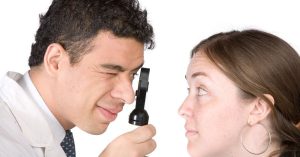
When it comes to Lyme recovery, rest is often the first recommendation patients hear—but is it always the right one?
When you’re dealing with exhaustion, joint pain, or brain fog, rest may feel necessary—and sometimes it is. But many of my Lyme recovery patients tell me that too much rest doesn’t help them recover. In fact, it often makes them feel worse: more isolated, more achy, more fatigued, and even more discouraged. It’s not surprising. Extended inactivity can lead to deconditioning, disrupted sleep, and a loss of motivation—all of which can stall the healing process.
Why Too Much Rest May Hinder Lyme Recovery
The idea that rest alone will heal Lyme disease doesn’t reflect what I see in practice. Most patients with chronic or post-treatment Lyme (PTLDS) need a balance—strategic rest and movement. Prolonged inactivity can:
-
- Disrupt circadian rhythms
- Worsen sleep quality
- Reduce cardiovascular fitness
- Increase pain perception
- Feed a cycle of isolation and low mood
While rest has its place, especially during flares or Herxheimer reactions, it should not become a permanent state. Recovery often requires small steps of gentle engagement with the world again.
The Role of Movement in Healing from Lyme
For many Lyme recovery patients, especially those past the acute phase, gentle, paced movement can support recovery. This may include:
-
- Short walks in fresh air
- Stretching or yoga
- Light physical therapy
- Deep breathing exercises
These activities improve circulation, help manage pain, and support nervous system regulation. Importantly, they also help patients feel more in control of their body again—countering the helplessness many feel during long illness.
“Movement reminds the body what healing looks like—even if it’s just a few minutes a day.”
How to Pace Without Crashing
Pacing is key. I never recommend overexertion. Instead, I encourage:
-
- Starting with low-impact movement for 1–5 minutes
- Resting before fatigue sets in
- Using apps or journals to track activity vs. symptoms
- Adjusting based on daily tolerance
This is not about pushing through pain—it’s about gently reintroducing function. For some patients, movement also helps reduce symptoms of co-infections like Babesia or Bartonella, which may worsen fatigue and exercise intolerance.
So, Should You Just Rest?
Rest has its place, but it’s not a cure. And for many of my patients, especially those who feel like they’re “bed-rotting,” it can be counterproductive. Lyme recovery often requires:
-
- Active treatment (antibiotics, antiparasitics, herbal protocols)
- Nutritional support
- Emotional connection
- Movement—even minimal
Rest is one tool, not the whole toolbox.
Final Thoughts: Lyme Recovery Means Re-engaging
Recovery isn’t just about avoiding crashes—it’s about finding what moves you forward. If you’ve been told to “just rest,” but it leaves you feeling worse, trust your instincts. Talk to a an experienced Lyme clinician. Start small. Stay consistent. And remember that movement, when tailored to your capacity, can be medicine too.
Outbound Links:
- CDC Lyme treatment: https://www.cdc.gov/lyme/treatment/index.html
- Dr. Daniel Cameron Lyme disease blog: https://danielcameronmd.com/fatigue-can-overlooked-sign-lyme-disease/
- Dr. Daniel Cameron Lyme disease blog: https://danielcameronmd.com/risk-pain-fatigue-three-weeks-lyme-disease-treatment/



Interesting